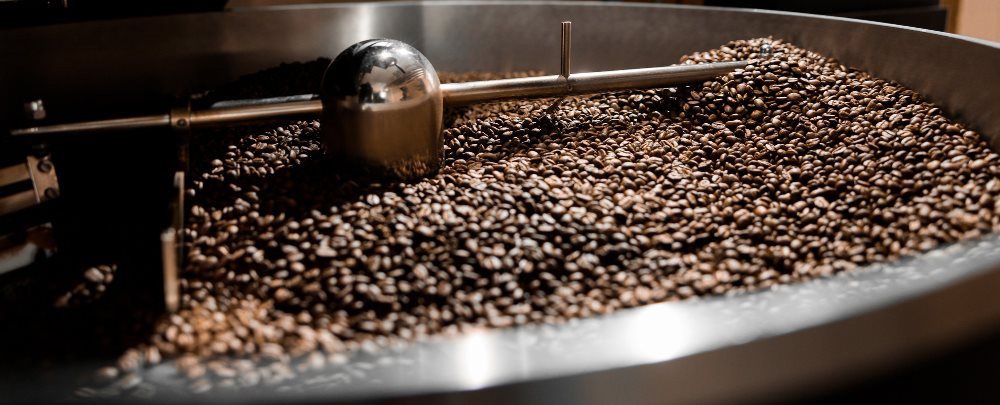-
- Some services are not accessible on a smartphone.
- Sign In
- My Account
- My Cart
- Customer Service
- Home
- >How to choose a specialty coffee roaster
What is a coffee roaster?
There are two ways to characterize coffee roasters. The process of transforming unripe green coffee beans into brown or black coffee beans, which are then ground and used to produce coffee, is described in each term. The first definition of a coffee roaster is a professional who buys coffee beans in bulk and plans roasting schedules to produce particular flavors. The second might refer to a variety of different tools that can be used at home to produce coffee roasts in much smaller batches, or occasionally the people who utilize them.

Many coffee roasters, like De Luca's view large-scale roasting as an artistic endeavor. After obtaining a supply of high-quality beans, roasters employ sizable roasting equipment to produce what are known as various "roasts." These are packed and sold there, or they may be delivered to a number of businesses where they are either sold to clients directly in bean form or made into delectable coffee drinks.
A few coffee roasters operate in the shadows, and the whereabouts of their facilities are not well known. Others, like Starbucks®, have honed techniques that are so well-liked that the precise varieties they produce may be roasted to precise specifications in every plant the business employs, before the coffee is sent out to Starbucks® and other locations. The level of celebrity that coffee roasters enjoy varies, but when these individuals or businesses highlight particular well-liked roasts, it could be a key selling element for the coffee.
The other kind of coffee roasters are basic or complex devices that come in a range of prices because many individuals want to practice this art at home. Theoretically, you could roast coffee at home in a pan—preferably one made of cast iron—on the stovetop or on a few cookie sheets in the oven. Since convection ovens tend to circulate air and cook beans more evenly, they are typically advised. This is essentially a return to the more traditional coffee processing since home roasting used to be the norm when it came to brewing coffee.
Many of the contemporary coffee roasters on the market could put a stop to comparisons to earlier times. Some of the pricier ones, which cost well over two hundred dollars, have a rotisserie or toaster oven-like appearance. Others use rotating drums to keep the beans moving while applying heat. Unquestionably the least "sophisticated" of these devices is a stove top variant that closely resembles a popcorn popper for the stove and costs typically $30+. To ensure an even dispersion of heat to each bean as they cook over the flames, they flip the beans by cranking a handle.
Any of the various coffee roaster models can roast between a half and a pound of coffee at a time, and each kind may need different levels of supervision. While some drum versions only require pressing a button to select the appropriate roast, stovetop devices typically require ongoing supervision and intervention. To achieve the best roast, some experimenting is necessary, and expert coffee roasters remind their amateur colleagues that superb roast coffee can only originate from good beans. Therefore, consumers should shop around to find the best fresh coffee beans available for purchase.
So now lets breakdown the different type of roasts.
Comparing Light Roast, Medium Roast and Dark Roast
Light roast coffee beans have a lighter shade of brown but do not have any oil on the surface. The coffee roast has the highest acidity and generally has the most caffeine. Light roast coffees tend to be of a fruity or herbal flavor.
Medium Roast coffee has a brown color that is a little darker than light roast. Just like light roast, the surface of the beans is oil free. Instead of having delicate flavors, medium roast has a more balanced flavor, aroma, and acidity between dark and light roasts. Medium roast that is left longer to roast can be considered Medium-Dark. A medium-dark roast is much richer and darker in color and oils show up on the surface of the beans.
Dark Roast coffee beans have a color just like Dark Chocolate and even more oil on the surface. Because these beans are left the longest in roasting temperatures they lose more moisture, become less dense and will have a bitter/smoky taste. They lose the original flavor but gain more flavor from the roasting process, similar to roasting nuts. If you really enjoy dark roast, you should try our French Roast. It is darker than dark roast and one hair away from being considered burnt.

Our coffee blends are strong, smooth and incredibly satisfying. Discover an exceptional selection of light, medium and dark roasts in a variety of flavor profiles. Sourced from unique farms from around the world – from Papua New Guinea, Ethiopia, Guatemala, Costa Rica, and Colombia to Peru. Discover specialty blends in a variety of roasts and flavor profiles.
